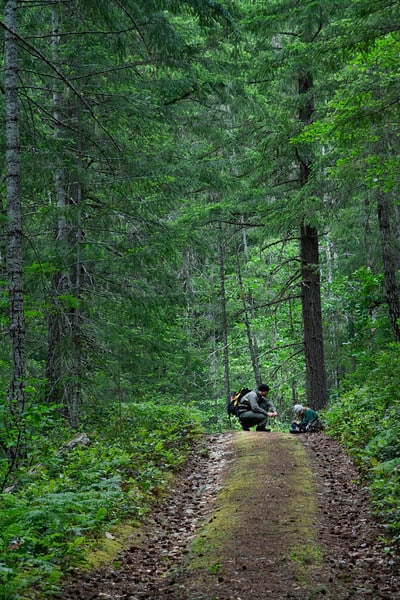Holy Gaia! I've Been Saved!: The Nature of Education and Vice Versa
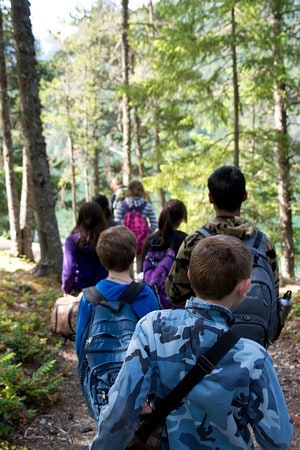
There’s a t-shirt that proclaims, “SAVE THE HUMANS.” It’s usually accompanied by an image of a cartoon whale, or maybe a panda bear. Have you seen it? For a long time I couldn’t understand the message. Save the humans? At seven billion and counting, with a city the size of Spokane added to the global population daily, are we really at risk of extinction any time soon?
When I was 21 years old, a passionate environmental studies major, I assumed the message was an awful attempt at anti-ecological humor. These were the early days, when I read Thoreau and would contemplate all the work on our shoulders of fixing the world while I laid surrounded by a circle of third-growth redwood trees, staring up at the small cutout of blue between their sky-scraping tops. There was an intense immediacy: People were suffering, and the rest of the non-human species were relegated as victims of our culture of violence, commonly known as “progress.”
Occasionally I’d meet other environmentalists, ones who were into meditation, or who were obsessed with eating healthy food, or who would om away their evenings and cap it with a namaste. This seemed arrogant. Oil companies are killing Nigerian activists and the President refuses to sign any international agreement on global warming, and you’re talking about the light that shines within me?! Their priorities seemed backwards: If we don’t help the earth — pronto! — there won’t be anywhere to go to therapy or sit in lotus position. As sociologist and author Barbara Ehrenreich put it in her 2009 book, Bright-Sided: How the Relentless Promotion of Positive Thinking Has Undermined America, “Why retreat into anxious introspection when, as Emerson might have said, there is a vast world outside to explore? Why spend so much time working on oneself when there is so much real work to be done?”
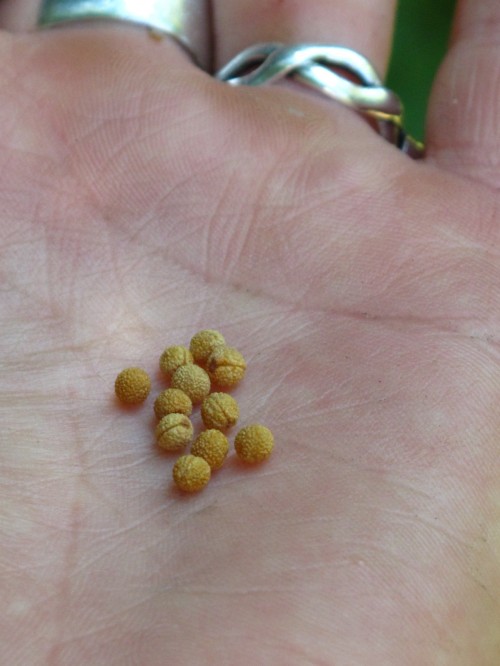 There is a vast world, and seeds to scatter. Photo by Katherine Renz.
There is a vast world, and seeds to scatter. Photo by Katherine Renz.
I can still tap into this kid, impatient and heartfelt as a black lab pup. But these days, my interpretation of the “Save the Humans” shirt has shifted. Instead of supporting that dominant, human supremacist paradigm, what if it’s suggesting that the ecological crisis is, in part at least, a spiritual one? That yes, we do need saving, though not in some frantic sense of scarcity belied by our exponentially growing numbers, or by a revivalist preacher coming to redeem our souls. Rather, because our gross disconnection from the rhythms of wild nature is at the heart of environmental destruction. Though modern scientists can split the atom and splice genes, most of us wayward ecological citizens have no idea what phase the moon is in and would fail in naming five wildflowers growing in our neighborhoods.
What if the best thing you can do to save the world is to save yourself?
Imagine — what could this entail? Teasing through ego and abuse, drama and addictions; considering personal consumption and assumption patterns; taking an active role in quietly learning about your surroundings rather than trying to force everything to conform to your own perspective; honing better communication skills. These would all be good places to start.
Environmental educators talk a lot about the importance of places to which we’re attached. Of connecting with, protecting, and enhancing them. What about the one place we can never escape? Start at home: body, mind, and spirit.
Bioregional poet Gary Snyder has written extensively on what he calls “the real work” of truly looking at ourselves: “The real work is what we really do. And what our lives are. And if we can live the work we have to do, knowing that we are real, and that the world is real, then it becomes right. And that’s the real work: to make the world as real as it is and to find ourselves as real as we are within it.”
Snyder uses the term “real work” in a different sense that Ehrenreich did, when she shunned the self-absorbing aspect of personal introspection for outward, more visible action. But the point of his words, for me, is that deciding to embrace this “real work” puts the responsibility on the individual, as opposed to only seeing something outside, something other, as the problem to fight.
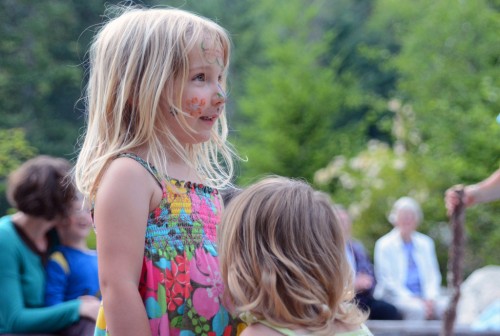 The real work. Photo by Scott Kirkwood.
The real work. Photo by Scott Kirkwood.
None of this is to suggest we should ditch our activist pursuits in the greater world for psychoanalyzing ourselves to death. It would be a counteractive example of tunnel vision to exchange the necessity of corporate accountability for agonizing over the consequences of failing to devoutly compost every single teabag we use. It’s to consider, instead, the difference between what we could maybe achieve through trying to force-persuade-scare-guilt people into changing versus re-focusing on where we can get more immediate, personal results, if we focus and commit. Such work is empowering and will make you a more effective, and compassionate, leader for the “big” work. And, I think, I hope, it reverberates beyond the self and throughout the world.
Or, as Robinson Jeffers, the poet-spokesman for California’s Big Sur coast, expressed a related sentiment in 1934: “I think that one may contribute (ever so slightly) to the beauty of things by making one’s own life and environment beautiful, so far as one’s own power reaches.” I think of this quote when I clean my room. I think of it when I show little kids the intricate insides of a rhododendron flower. I think of it when I imagine helping turn people all over the country on to the ecology that surrounds them.
Ultimately, then, what in the blue-green world does this all mean for the environmental educator?
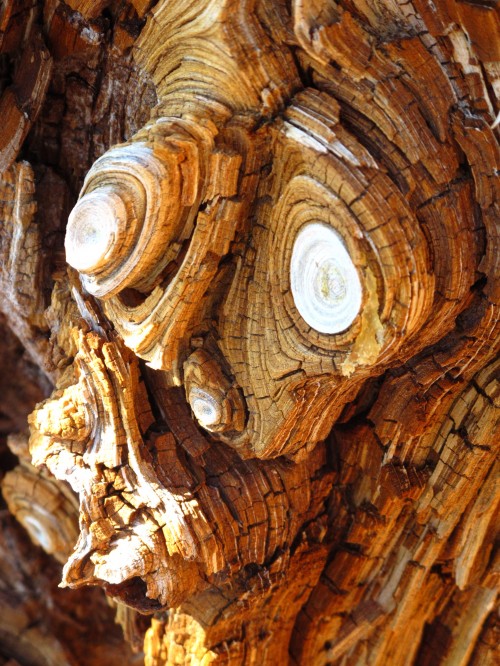 What does this all mean for the environmental educator? Photo by Katherine Renz.
What does this all mean for the environmental educator? Photo by Katherine Renz.
I, honestly, don’t know. Yet. This question – how do you incorporate personal responsibility and “the real work” into experiential field classes? – is one of my primary motivations for attending North Cascades Institute’s Masters of Education program. Certainly, my intention would not be to slam the “save the world” cliché for the kiddos, but to somehow share with them the more visceral power in creating one’s own reality rather than only reacting to all the junk in the world they’re inheriting. I suspect the answer resides, among other places, in a Carsonian sense of wonder, in reciprocity, and in an expanded concept of self to include the natural world as advocated by ecopsychologists and other deep ecologists.
This is a huge challenge. Though I can imagine getting this heady with high schoolers (maybe), I’m constantly experimenting with how to weave the little I know about the more Taoist approaches of mindfulness and humility into work with younger learners. In the meantime, I’m designing a new version of that t-shirt. “SAVE YOURSELF,” it’ll read, in fuzzy, friendly bubble letters, accompanied by an image of a whale in the lotus position.
Senior naturalist Kevin Biggs, checking in with a Mountain School on trail. Photo by Scott Kirkwood.
Leading photo: A group of Mountain Schoolers hits the trail on the Environmental Learning Center’s campus. Photo by Scott Kirkwood.Katherine Renz is a graduate student in North Cascades Institute and Western Washington University’s M.Ed. program. She’s working on making the world as real as it is and finding herself as real as we are within it. Or something like that. Sort of. At least, when she’s not agonizing over using processed teabags instead of the more eco-benign loose leaf, homegrown herbal variety.


